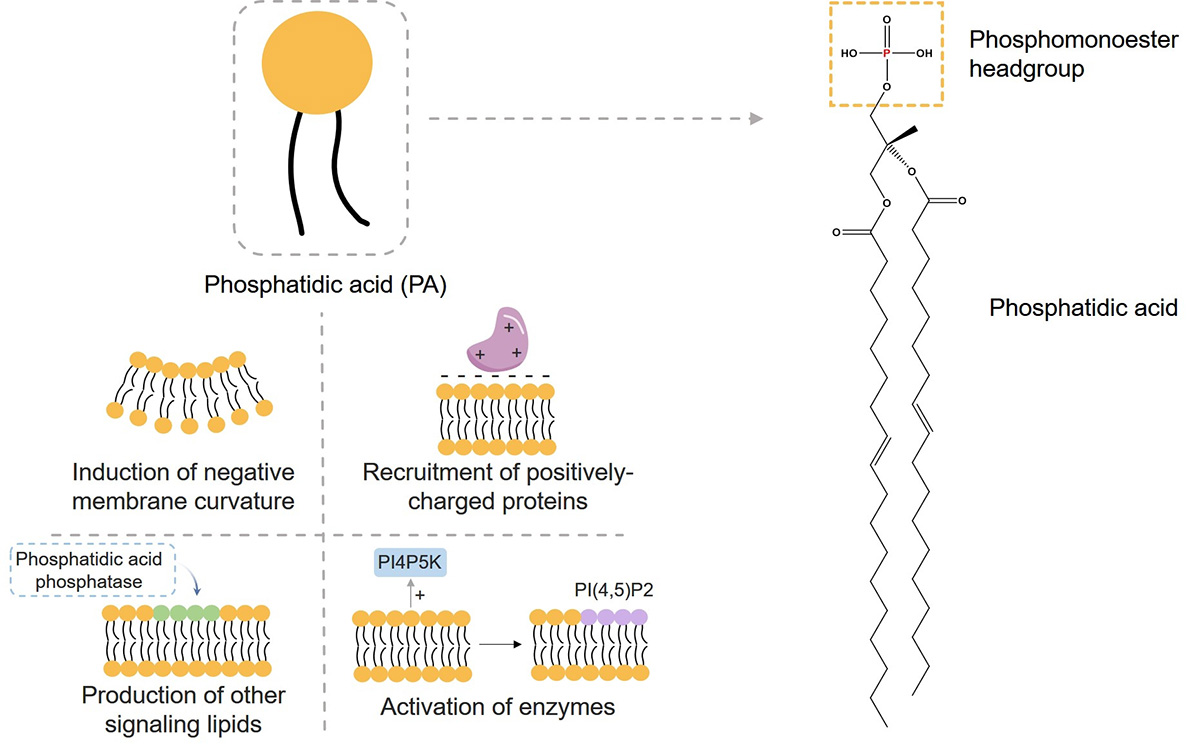Creative Biolabs is a biopharmaceutical company that holds a leadership position in the global market and focuses on improving human health through biotechnology. Our mission is to develop high-quality innovative tools and services to accelerate drug discovery.
The phosphatidic acid (PA) is an anionic lipid consisting of a negatively charged phosphomonoester headgroup attached to a hydrophobic diacylglycerol backbone. It is the simplest glycerophospholipid naturally occurring in all living organisms, and even though its content is minor in comparison to other cellular lipids, it is attracting more and more attention due to its various biological functions. PA is a key intermediate in the synthesis of neutral lipids (di- and triacylglycerol) and all glycerophospholipids. These include phosphatidylserine (PS), phosphatidylethanolamine (PE), phosphatidylcholine (PC), phosphatidylinositol (PI), and the phosphatidylinositol phosphates (PIPs), which together make up the bulk of cellular membranes. In addition, PA is emerging as an important signaling lipid, which is thought to act by binding effector proteins and recruiting them to the membrane, thereby regulating the activity of proteins in cellular pathways.
PA is unique among phospholipids because it contains a phosphomonoester headgroup rather than the phosphodiesters in other phospholipids such as PS, where the phosphate group is also attached to the serine. The chemical structure of PA consists of alcohol, glycerol, in which two fatty acids (also known as acyl chains) and phosphate esters are esterified at the 1, 2 and 3 positions, respectively. The headgroup of PA is attached as a phosphomonoester (see Figure 1) and therefore has the potential to carry two negative charges, as opposed to a single negative charge on the more common anionic phospholipids such as PS and PI phosphate, which separate PA from all other diacyl-glycerophospholipids. Therefore, the specificity of the PA-protein interaction may be related to the ionization properties of the phosphomonoester headgroup. A number of PA binding proteins with various functions and cellular localization have been identified to date in yeast, plant and mammalian cells.
 Fig.1 Structure and different models for signaling activity of PA.
Fig.1 Structure and different models for signaling activity of PA.
Features of Our Services
Creative Biolabs offers best-in-class technology to help researchers around the world solve a variety of difficult problems in the biomedical field. As a global company, our team of expert scientists also offers a wide range of custom services to every customer from around the world, covering every process of drug discovery. If you have this need, please feel free to contact us.
 For Research Use Only. Not For Clinical Use
For Research Use Only. Not For Clinical UseSupports
Online Inquiry

